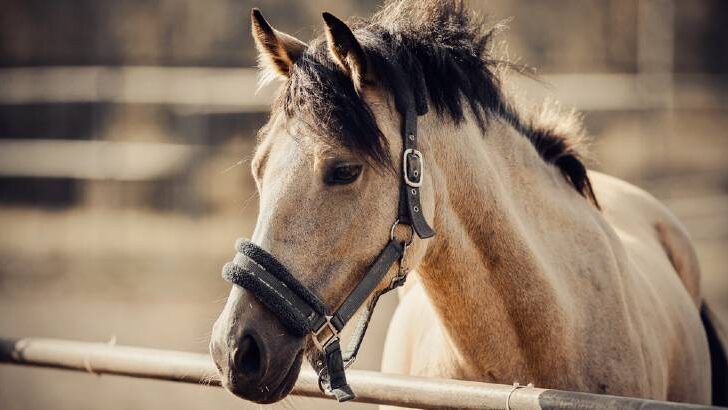Affiliate Disclaimer
As an Amazon Associate I earn from qualifying purchases. It helps me keep the website going. Thank you for your support.
Did you know…Up until, or around domestication, Equus ferus caballus (the modern domestic horse) were all bay dun horses. Every single one of them! However, we didn’t know this until researchers started looking for the gene that causes the dun color. They compared the genome of a dun horse with that of a modern equine genome and what they discovered turned what we assumed about equine colours on its head.
It turned out that the dun horse, and all subsequent dun horses they studied, had some significant differences in DNA to that of the non-dun genome. Long story short – when they compared the dun horse genome with that of a primitive horse, they found a match, proving the dun horse had the older genome.
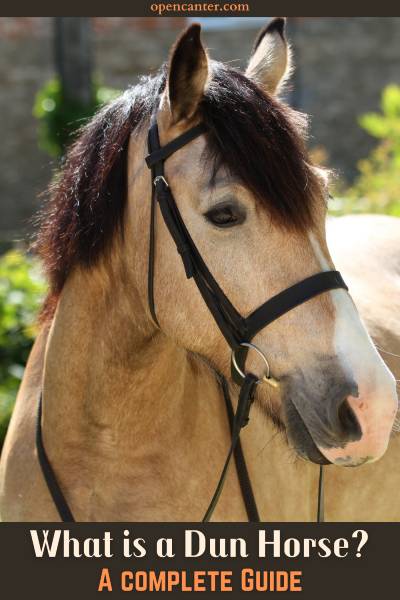
Where Does The Dun Gene Come From?
When researchers found that genetic match between modern dun horses and primitive horses, they realized that the dun ‘gene’ is the ancestral DNA coding of the TBX3 gene in equines.
In other words, it is the original color of the modern domestic horse and many of its surviving relatives (Przewalski’s Horse, Zebras, and Asses).
So, the dun gene comes from antiquity, way back before Equus split up into the various sub-branches that led to the various modern sub-species.
What Makes A Horse A Dun: Dun Colour Definition
How do you classify a dun? Until fairly recently any horse that had ‘primitive’ markings, notably a dorsal stripe along its spine, was called a dun. Many were registered as such with both color and breed registers.
Now however we know that genetics is what makes a horse a dun. Namely, they must carry at least one copy of the ancestral DNA coding at their TBX3 gene. If they don’t, they are not genetic duns, regardless of how many primitive markings they may have.
What Does This DNA Coding Do?
The ancestral DNA coding at the TBX3 gene produces asymmetrical pigmentation in the hair shafts across the body of the horse. ‘Asymmetrical’ means ‘unevenly distributed’ and in the case of duns, it loads more pigment on one side of the hair shaft than on the other.
By contrast, in non-dun horses, the coat pigment is evenly distributed around the hair shaft. These differences produce the muted, or diluted, appearance of dun horses vs. the rich even coloring of non-dun horses.
The other thing the ancestral TBX3 DNA coding does is produce intense symmetrical pigmentation on various other parts of the body. These areas are called ‘dun factors’ or ‘primitive markings’. They are typically the color of the underlying coat pigment.
A bay dun horse will therefore have a dark red dorsal stripe and a combination of black and red leg barring and mottling on its legs depending on location. Lower legs tend to have black barring and that on the forearms will be red where the coat transitions from black points to red body color.
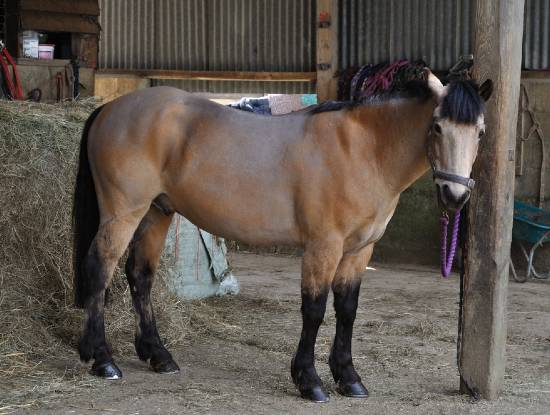
What Are The Primitive Markings On Dun Horses?
Primitive markings are a series of dark-pigmented markings on the body of the horse. We often refer to these as either ‘true’ or ‘false’ markings.
‘True’ primitive markings are those caused by the ancestral DNA coding at the TBX3 gene. ‘False’ primitive markings, or counter shading, are often caused by the nd1 variant of the gene but more on that a bit later.
11 common primitive markings:
1) A Dorsal Stripe
This is a dark crisp line that runs along the center of the horse’s back from the tail head to the withers. A ‘true’ dorsal also extends down into the tail of the horse and can often be seen running right down the length of the tail, particularly if the horse has a light tail.
True dorsal stripes are also the undiluted color of the underlying coat. False dorsals, like those seen in nd1 horses, are often black, not as crisp as a true dorsal, and finish at the tail head.
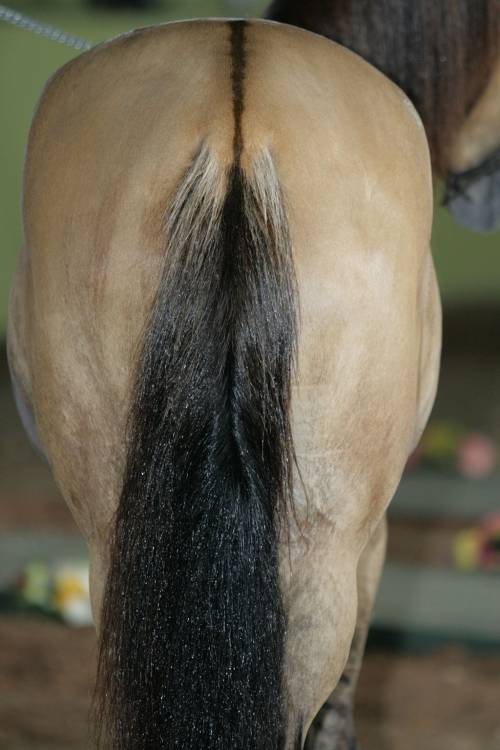
Arsdelicata, CC BY-SA 3.0, via Wikimedia Commons
2) Leg Barring
These are horizontal stripes on the legs of the horse. Those in true duns change color in keeping with the transitions from point color to body color in the underlying coat. Those in nd1 horses are usually the same color all the way up the leg, and not as distinctive.
3) Mottling
These are mottled patches of dark color usually found on the forearms and hocks of duns.
4) Face Mask
This is a darker area of hair on the face. In duns, it tends to start between the eyes and extend toward the bottom of the face. In non-duns, it starts on the forehead and extends partway down the face.
5) Cobwebbing
Cobwebbing is a series of concentric marks that radiate outwards from the center of the forehead.
6) Ear tips
The top half of the ears look like they’ve been dipped in dark paint the undiluted color of the horse’s body.
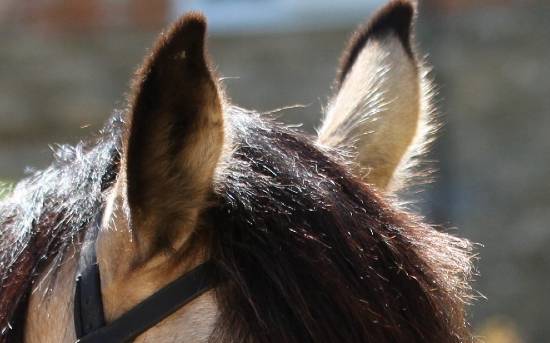
7) Ear edging
The outer rim of the ear has a dark outline or edge the same color as the ear tips
8) Frosting
This refers to a line of body-colored hair growing along the mane and on either side of the dock at the tail head.
9) Dorsal barbs
Sometimes the dorsal stripe has dark barbs along it.
10) Shoulder barring
This is a dark line the same color as the dorsal stripe and other dun factors that extend from the dorsal stripe down over the withers and shoulders.
11) Neck shadow
Some duns have a dark patch or shadow along their neck.
Do Dun Horses Always Have A Dorsal Stripe?
One of the interesting things about primitive markings is that they vary considerably between individuals. Some duns have every single one; others may only have 4 or 5.
The markings can be very noticeable and striking, or not so loud, and considerably less striking, particularly on some colors – those on palomino duns for example can sometimes be very hard to see.
However, duns always have a dorsal stripe. It may vary in thickness from very narrow to quite broad. It may not always extend all the way from the tail to the withers but it’s always there.
Why Do Some Horses Have Primitive Markings Yet Aren’t Duns?
Like those on true duns, the TBX3 gene also controls primitive markings on non-duns. Unlike true duns though, non-duns have slightly different DNA code at this gene.
In fact, the researchers didn’t just find one different variant of DNA coding at TBX3… They found 2, which means the equine TBX3 gene has 3 variants in total – the ancestral version plus 2 altered versions.
- The first version is the original ancestral DNA, denoted by D and it produces true duns.
- The second version has a base pair swap, or spontaneous single nucleotide polymorphism (SNP), that swaps adenine for guanine. The change removes some of the gene’s ability to produce asymmetrical hair pigment, resulting in a less diluted-looking coat.
The code that produces the primitive markings is unaltered so horses with this variant often still have some primitive markings. Some can be so pronounced the horse looks dun, whilst others are almost indistinguishable.
Regardless, they are not true duns. We call this variant non-dun 1 or nd1 for short, and it’s the reason why some horses have primitive markings yet aren’t duns. - The third variant is the one we’re most familiar with because it produces a glossy, richly pigmented coat without any primitive markings. This variant has 2 missing chunks of DNA code (deletion mutations).
The larger deletion takes in the section of DNA where the nd1 SNP is located; horses with this TBX3 variant can no longer produce the asymmetrical pigment distribution. Additionally, the code that produces primitive markings is also missing in this variant.
As a result, they can’t produce primitive markings either. This variant is called non-dun 2 or nd2. Today the vast majority of horses are either homozygous for this variant, or carry one copy plus one copy of nd1.
When Did These Variants Happen?
Variant nd1 is ancient. We know this because DNA taken from a 42,700-year-old horse found it was D/nd1, which means it had 1 copy of the ancestral variant and 1 copy of the nd1 variant. A 4,400-year-old horse was nd1/nd1 so had 2 copies of this variant.
Variant nd2 probably occurred around the same time as domestication so some 4,500 years ago. It doesn’t exist in any of the horse’s closest living relatives – Przewalski’s horse, Asses (includes the donkey), and Zebras, and has very little nucleotide diversity. (The more nucleotide, or genetic, diversity, a variant has, the older it usually is).
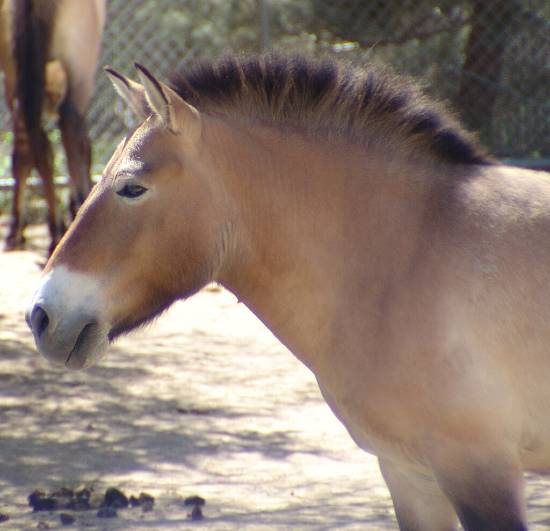
Drew Avery, CC BY 2.0, via Wikimedia Commons
The fact that it so quickly dominated horse colors is a clear indication that it had human help to spread. We liked this fully pigmented, glossy-coated equine so we selectively bred for the characteristic.
Is Dun A Dominant Gene?
Dun is what we call a simple dominant gene. That means that if there is a copy of the ancestral TBX3 DNA present, the horse will exhibit dun characteristics.
It will have a muted-looking coat and primitive markings. It also means that it will modify all 3 equine base coat colors as well as all the various dilute colors and coat patterns.
What Are The Different Colors Of Dun?
That being the case, dun on the 3 base colors are:
- Chestnut or red dun – dun on a chestnut or red base
- Bay or yellow dun – dun on a bay base, sometimes called zebra dun
- Black dun or grulla – dun on a black base
Then we have dun on the various dilute colors:
- Palomino dun or dunalino – dun on palomino
- Buckskin dun or dunskin – dun on buckskin
- Smoky black or smoky grulla – dun on smoky black
- Cremello dun – dun on cremello (red based)
- Perlino dun – dun on perlino (bay based)
- Smoky cream dun or smoky cream grulla – dun on smoky cream (black based)
- Gold dun – dun on gold champagne (red based)
- Amber dun – dun on amber champagne (bay based)
- Classic dun – dun on classic champagne (black based)
- Bay silver dun – dun on bay silver
- Black silver dun or silver grulla – dun on black silver
And so on. Add in coat pattern genes and you can have any of the above different colors of dun plus a coat pattern i.e. red dun tobiano, bay dun appaloosa, etc.
What Is The Difference Between A Dun And Buckskin Horse?
The dun vs buckskin debate…! Buckskins have been called ‘duns’ for decades, if not centuries, in some countries, and the habit remains, particularly in breeds where there is a tradition of doing this.
They are however 2 totally different genetic colors, caused by two completely different genes with 2 quite different pigment modifying mechanisms.
- A buckskin is a bay-based horse or pony with a single copy of a variant of their MATP gene called ‘cream’ that dilutes the red pigment on their body. How this happens is a topic for another day but it is not even remotely similar to the way dun works! Similarly, a palomino is a chestnut with a single copy of this same cream variant. A smoky black is a black with a single copy of the cream variant.
- Dun horses can be any base color or any base color plus one or more of the other dilutions. Their dun coloring occurs because they carry at least one copy of the ancestral version of the TBX3 gene as explained above.
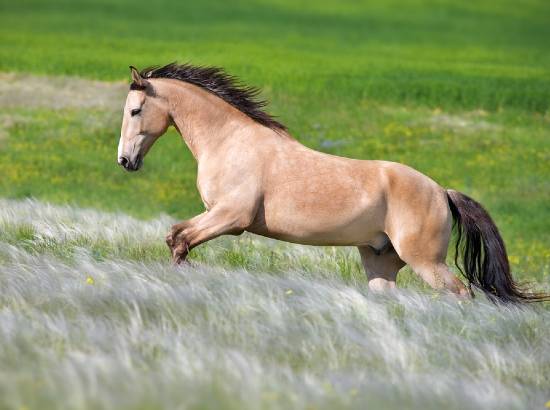
What Horse Breeds Are Dun?
Dun horses and ponies occur in many breeds, not least because it’s the ancestral color of all species of Equus, including the domestic horse.
Nevertheless, there are a number of breeds in which it’s not found – Thoroughbreds, purebred Arabians, and Standardbreds are a few that spring to mind. Ironically, it’s also extremely rare in the Welsh breed, a breed well known for its tradition of calling buckskins, duns!
Conversely, some breeds are almost exclusively dun or have a very high % of them – the Norwegian Fjord is one. Highland Ponies are another.
The ancient southern Iberian wild horse, the Sorraia horse, is likewise almost 100% dun and most commonly black dun, or grulla. Interestingly, this breed is an ancestor of the modern Iberian breeds (Andalusian, Lusitano, etc) in which dun is exceptionally rare.
Konik Ponies (an old Polish breed) are also mostly grullas. The Riowoche horse (or pony) is yet another ancient breed that has been allowed to breed in isolation in northeastern Tibet, and is 100% dun, although many of them are bay dun rather than grulla.
Many Icelandic Ponies are dun, and the color is likewise common in some native English pony breeds (except Welsh!) like the Shetland. Similarly, the domestic horse’s closest relative, Przewalski’s Horse, is dun.
Duns are popular in American breeds like Quarter Horses, Tennessee Walkers, Mustangs, and Miniature Horses. Elsewhere dun is found in pony and horse breeds like the Australian Pony, Australian Stock Horse, Kathiawari Horse (an Indian breed), Miniature Pony, and so on.
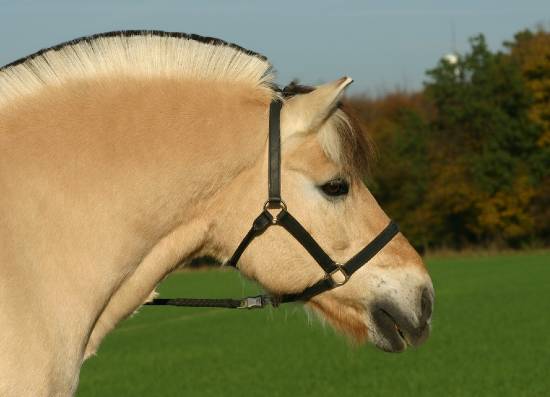
Are Dun Horses Rare?
Although dun horses are not rare per se, they are nevertheless less common than many other colors. Part of the reason for this (the main reason?) is because humans selectively bred it out of most of our modern breeds in favor of homozygous non-dun 2 horses with their glossy, richly pigmented coats.
However, ancient breeds whose gene pools have largely been left pure, like the Sorraia, Riowoche, and Konik Pony, are invariably mostly dun. Indeed, breeds like these are now being used to ‘recreate’ the extinct and predominantly dun European wild horse.
What Color Horses Make A Dun?
We’ve explained some of the basic concepts that underlie equine color genetics in our articles about roans but to recap:
- To get a dun horse, at least one parent must be dun
Secondly, because duns can be any color, it doesn’t matter what color horses you use to make a dun. Unless of course, you have a preference for a particular colour dun… If you’d like to breed one that color, you’ll need to choose parents that have the right base colors and underlying color genetics to produce that color.
How Do You Get A Red Dun Horse?
Chestnut or red duns are genetically ee/D_ (agouti status is irrelevant). Therefore, to get a red/chestnut dun the best way is to use 2 chestnuts, at least one of which must be a red/chestnut dun. That way, all the offspring will be chestnut, and depending on how many copies of the ancestral TBX3 DNA are in the mix, could be:
- 100% dun if one parent carries 2 copies of this DNA
- 75% dun if both parents each carry 1 copy of this DNA
- 50% if only 1 parent carries 1 copy of this DNA.
Obviously, other combinations will also produce red dun if the right color genetics are present.
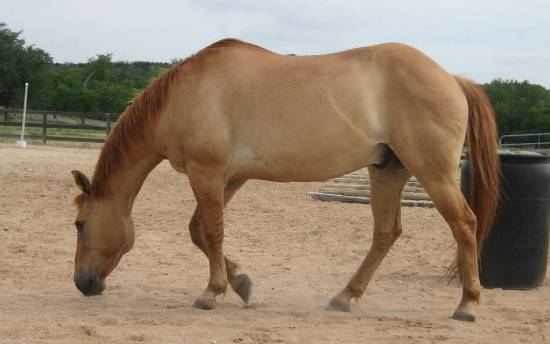
jumpinghooves, CC BY 2.0, via Wikimedia Commons
How Do You Get A Bay Dun Horse?
A bay dun horse is a bay horse with dun (genetically E_A_D_). To get one, you need 2 parents with the right color genetics to produce bay. That means you need the following in the parental mix:
- At least one copy of dominant extension (E)
- At least one copy of dominant agouti (A)
- At least one copy of dun (D)
Your odds of a bay dun go up to 100% if all 3 of these are present in homozygous form i.e.
- One parent may be EEAA and the other parent DD, or
- One may be EEDD and the other AA, or
- One is EE and the other AADD, or
- One is EEAADD.
In each case, the parent can ONLY pass on an E, an A, and a D = E_A_D_ or bay dun).
Your odds go down to 75% if:
- Both parents are Ee
- Both parents are Aa
- Both parents are Dnd_
This is because there is a 25% chance of the offspring receiving the recessive variant from each parent.
Your odds go down to 50% if:
- One parent is Ee and the other is ee
- One parent is Aa and the other is aa
- One parent is Dnd_ and the other is non dun (nd_nd_)
This is because you have a 50% chance of the offspring receiving the recessive variant from each parent.
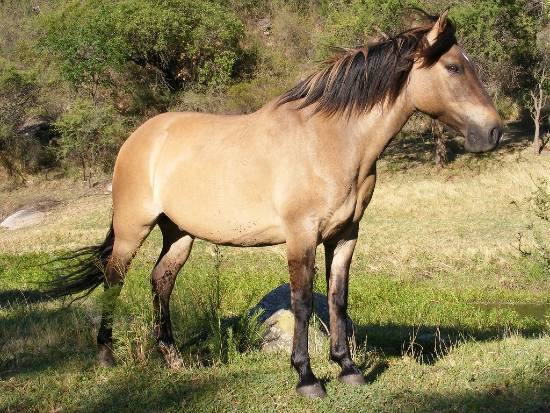
Javier Prazak from Argentina, CC BY 2.0, via Wikimedia Commons
How Do You Get A Black Dun Or Grulla/Grullo Horse?
As with red and bay duns, a black dun horse, or grulla/grullo, needs at least one dun parent. Genetically they are E_aaD_. Thus the parental mix must include:
- At least one copy of dominant extension (E)
- Each parent must carry at least one copy of recessive agouti (a)
- At least one copy of dun (D)
Your odds of a grulla go up to 100% if:
- One parent is homozygous for dominate extension (EE)
- Both parents are homozygous for recessive agouti (so both are aa)
- One parent is homozygous for dun (DD)
In each case, as homozygotes the parents can ONLY pass on an E, an a, and a D = E_aaD_ or grulla).
Your odds go down to 75% if:
- Both parents are Ee
- Both parents are aa
- Both parents are Dnd_
This is because there is a 25% chance of the offspring receiving the recessive variants e and/or nd_ from each parent, making them ee (red) and/or nd_nd_ (non-dun).
Your odds go down to 50% if:
- One parent is Ee and the other is ee
- One parent is Aa and the other is aa
- One parent is Dnd_ and the other is non dun (nd_nd_)
This is because you have a 50% chance of the offspring receiving the recessive variants e and nd_ from each parent, and 50% chance of the offspring receiving the dominant variant A.
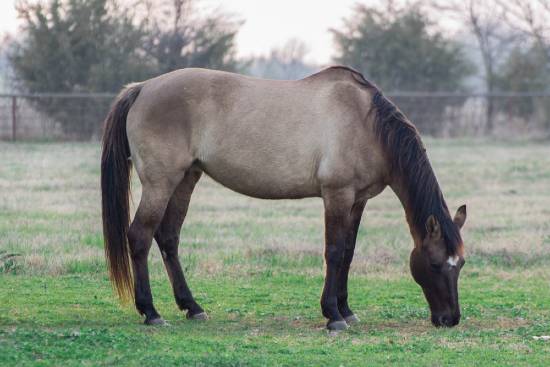
What Is The Difference Between Grulla And Dun?
Dun refers to any color, including black, with the ancestral TBX3 DNA coding. A grulla (pronounced grewyah) specifically is a black dun horse.
What Colour Is A Grullo Coat?
A grullo, or grulla, coat is usually a silvery pewter or lavender grey color with black primitive markings.
Is It Grulla Or Grullo Horse?
What is the meaning of grullo? Well…it depends! In some languages, it means ‘stupid’ (truly) and in others, it means ‘male’ or ‘masculine’.
‘Grulla’ on the other hand is a Spanish word for ‘crane’ and describes the silvery grey color of black dun horses. It does tend to be used more frequently globally than ‘grullo’. However, some people use ‘grulla’ for black dun mares and ‘grullo’ for the males so make what you will of that…!
Final Thoughts
From ancient times to modern breeds, dun horses have been around longer than any other color of horse. Indeed, once all horses were dun but today they’re nowhere near as common thanks to selective breeding in favor of non-dun horses. Regardless, they are one of the most striking appearing with their muted coats and dark primitive markings.

